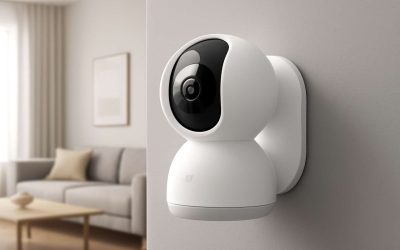
Whether you’re looking for a camera for your home or business, you should know that there are many different types of IP cameras on the market. These include analogue cameras, wireless cameras, P2P cameras, and more.
P2P IP cameras
Compared to traditional port forwarding security cameras, P2P IP cameras offer a convenient option for internet configuration. The technology allows users to connect their P2P cameras to a wireless network or to a smartphone app, making it possible to watch recorded footage and live feeds from anywhere.
There are a variety of P2P IP cameras available on the market today. You can access these cameras through desktop software, a mobile app, or by connecting your PC to the wireless network. They are very easy to set up and will provide you with high-detail videos.
The P2P IP camera app, on the other hand, enables you to view, record, and save your footage from wherever you are. You can use this app on Android and iOS devices, and it provides clear HD videos in MPEG4 format.
Unlike traditional IP cameras, which require a static IP address, P2P IP cameras rely on a cloud server. This server provides a direct connection between the camera and your smartphone. The connection is not only confidential, but also secure.
PoE vs PoE+ IP cameras
Depending on the type of camera you are using, it is important to determine if you need PoE or PoE+. Both are designed to supply low-wattage devices with power over a quality Ethernet cable. This allows you to avoid installing a lot of power outlets and electrical wires.
The key difference between the two is that a PoE system requires less hardware and can be installed quickly. On the other hand, a PoE+ network may require more networking hardware. However, the benefits of PoE are many.
IP cameras, also known as Internet Protocol cameras, are digital video surveillance devices that capture and send footage over a local area network. They are often used in conjunction with a network video recorder.
A POE camera is a type of IP camera that uses a single Ethernet cable to deliver both power and data. This makes it easier to install and manage the device. It provides a higher degree of safety than a traditional IP camera because it does not require an extra electrical socket.
Wireless IP cameras
Having a wireless IP camera is an important way to monitor a home or business. It eliminates the need for messy wires and cables and allows you to view live footage and recorded security recordings.
Wireless IP cameras come in a variety of different models and features. They can handle various resolutions, have support for a wide range of compressions, and can even handle real-time frame rates.
Some wireless IP cameras offer two-way audio. This feature is especially useful for doorbell cameras, which allow you to talk to a person or subject while viewing the live footage. These types of cameras also have the ability to send notifications to a mobile phone if motion is detected.
These types of cameras can be used for monitoring a large area or for special events. They also work well with satellite Internet connections. They can be connected in seconds and require no special router settings. They can be controlled by a computer or a smartphone.
Analogue vs IP camera systems
Whether you want to install an analog or IP camera system, you’ll find that both types can meet your needs. However, you should consider some important things before you decide on the right one.
First, analogue cameras usually work over a coax or twisted-pair cable. They are cheaper and can be easier to set up. This means that they are perfect for smaller surveillance systems. Those that need a higher resolution can choose an IP camera instead.
An IP camera also works on a network. It sends the video to a video recorder, which then saves the footage for future use. This makes it more secure. The data is encrypted, so you won’t have to worry about it being hacked.
An IP camera is a lot more expensive than analogue cameras. This may be due to the cost of the cameras and recording equipment. The price can also vary because you can use your existing cabling infrastructure. This means you don’t have to pay to have new cables run.



0 Comments